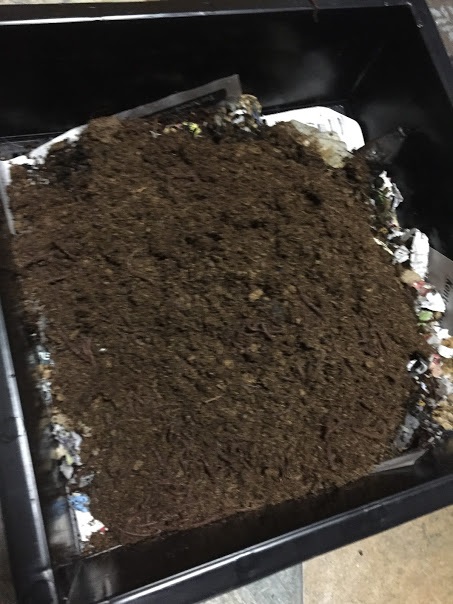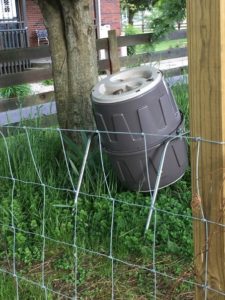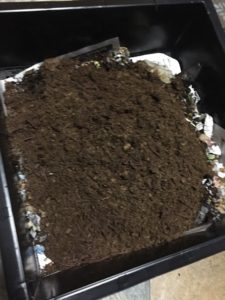I’ve been composting for many years. As a little girl, I remember my mother saving egg shells and coffee grounds to put around her flowerbeds. From the giant azalea bush in the front yard to the rose bushes that have been at the house for 40+years – all of our flowers benefited from the calcium and nitrogen boost. We ate lots of eggs, and my parents drank lots of coffee… so it was an accidental coincidence that there was a little less waste each week in the trash can.
As an adult, my household produced much fewer quantities of these precious eggshells and coffee grounds, so I attempted to make use of something else I had a lot of: vegetable waste. Of course, I’d heard about composting and how it was good for the earth etc. etc., but I honestly didn’t realize it would entail more than just tossing my scraps in a bucket and calling it a day. Fortunately or unfortunately, it’s a bit more involved than just that.
For me, composting is a little bit of art and a little bit of science – and a whole lot of waiting. I have 2 tumble bins at my house, and even my mother-in-law has a tumble bin. Although there are specific ratios for the “green” and “brown,” I’ve found a good rule of thumb for us is 1 part green to 2 parts brown. Keep it as moist as a very wrung out sponge. And tumble as often as I can. These are fine instructions for a regular household, but for our farm, I had to rethink the compost process. That means a few new “critters” that now fall under the S&B umbrella.
There will be many posts in the future regarding the composting program for our animal poo, but for now, I will gloss over those specifics. (But did you realize that with livestock operations, excess poo is a huge concern? Algae blooms in ponds. E.coli. Horrible smells. It’s an ecological disaster waiting to happen.) One of the many ways that farmers are trying to reduce these concerns is using worms. Specifically, the Eisenia fetida, which is commonly known as the red worm. These aren’t the earthworms and night crawlers that you randomly find around you yard after a rain shower. Unless you dig through horse manure on a regular basis, you likely wouldn’t have encountered these guys. They feed on rotting plants, compost, and manure. Their castings enrich the decaying matter they are feeding on. They love rotten vegetables, and even newspaper, Kleenex, and papertowels. Just like with the tumble composter bin, it’s all about the ratio. Red wigglers will eat up to half their weight in food every day.
In order to start a colony of red wigglers, this spring I ordered some of these worms online. I read that they will double their population approximately every 3 months. And believe me, they’ve done that! The main drawback with these guys is that they are sensitive to temperature. In a manure pile, they’re able to bury down deep where it’s cooler, and move around as is comfortable for them. In a ‘regular” compost bin, though – the goal is to keep it hot hot hot! So, what to do?
For me, I bought a worm bin. I’ve got several thousand worms that live happily in my spare bedroom. They are fed a rich diet of leftover fruits and vegetables, in addition to the recycled newspapers from my mom & dad. (This picture shows the first layer of the first bin. The worms are already burrowed down deeply into their new home.)
Come spring next year, I’ll introduce some of these guys to the aged compost from the sheep and alpacas, and also offer some up for sale for your own starter worm bin or compost bin.
For S&B, worms may be only a small piece of our composting picture, but everything fits together. They are the “finishers” for our composting process. And if you purchase aged compost from us, you will likely be bringing some of these guys home with you, too!
S&B Bell Farms is a participant in the Amazon Services LLC Associates Program, an affiliate advertising program designed to provide a means for sites to earn advertising fees by advertising and linking to www.amazon.com



